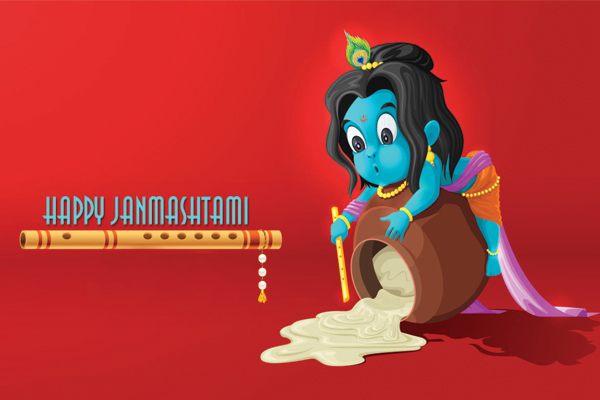Types and Significance of Janmashtami Fasting
Posted on 25/08/2016 I by: AstroSaathi

Janmashtami marks the mortal birth of Lord Krishna which is celebrated with great enthusiasm all over the country. Lord Krishna holds an important place in our hearts. According to Hindu calendar this festival is celebrated on the 8th day of Ashtami of Krishna Paksh in the month of Bhadon of the dark fortnight. There are many spiritual practices and customs that are followed during Janmashtami. Of all, the most common one is the Janmashtami fasting. It is believed that Lord Krishna was born at 12 midnight when devotees offer prayers to Kanha and break their fast.
Types of Janmashtami fasting
Fasting is observed to remove impurities from body, mind and soul. Devotees spend their fasting day by chanting His name. There are two common types of Janmashtami fasting:
i) Phalahar Fast
ii) Nirjal Fast
In Phalahar vrat, the devotee refrains from cereals, grains, salt and rice. They have only buckwheat flour and potatoes once during the day. However, the devotee can eat fruits and drink milk before sunset. The phalahar is at consumed midnight after offering prayers and bhog to Krishna.
In Nirjal vrat, the devotee does not eat or drink anything until midnight Janmashtami Puja is performed, and bhog is offered to the deity.
Significance of Janmashtami fasting
Janmashtami fasting is far more beneficial compared to Ekadashi fasting. Legends say, when Yudhishthira asked the benefit of Janmashtami vrat to Lord Krishna, He shed light on the fact that on observing fast on Janmashtami, one will never lack wealth, food and fame.

